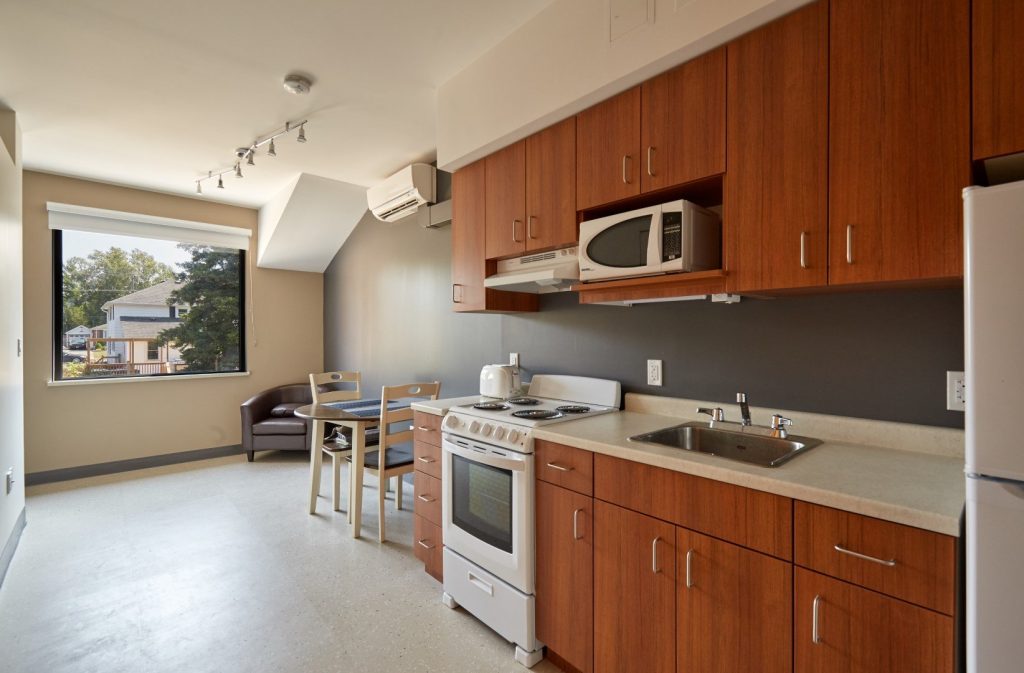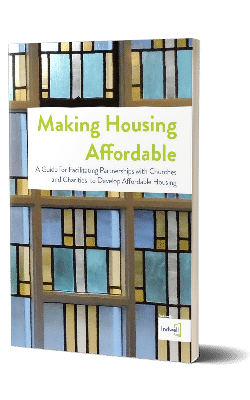
Your home is engineered to passive house standards—one of the highest standards for energy efficiency in the world—which significantly reduces its ecological footprint. Not only is this good for the planet, but it’s good for you too, as your utility bills will be drastically lower than in a conventional building.
Plus, your apartment is well-ventilated, quiet, maintains a comfortable temperature, and is a pleasant place you can call home while doing your part to reduce your impact on the environment.
How you can save more energy
You are billed for your unit’s electrical use, but you can control how much you use. Air conditioning is centrally operated and included in your rent. Your thermostat controls the wall radiator that adds extra heat to your room if needed (however, due to the building’s high heat-retention and ventilation, you’ll rarely—if ever—have to use it).
Here are some ways in which you can take full advantage of the passive house design for environmental and financial benefits:
1. Open your windows when the temperature outside is similar to the temperature you want inside.
Opening your windows will allow for direct circulation. Opening the windows is a good option during days when the temperature and humidity outside is about what you would want your apartment to be at, but during cold or hot days opening your windows will actually waste energy as heated or cooled air will leave the building.
2. Feeling warm? Turn on your fan.
While it won’t actually lower the temperature, turning your fan on will significantly increase how cool your apartment feels.
3. Use your blinds.
Closing your blinds will help keep your apartment cool during hot and sunny days. Having them open and the sun shining in will add warmth to your apartment in winter.
4. Don't add unnecessary heat and humidity.
This building is highly insulated. As such, any heat and humidity that’s produced stays longer, unless it is ventilated outside. On hot and humid days in the summer, you’ll want to keep your showers short and cool and keep the bathroom door closed before and after showing. Avoid cooking on the stove or in the oven—as well as the use of anything that produces heat (e.g. candles) as much as you can on hot, humid days.
5. Use your range hood.
Your range hood has carbon filters to reduce cooking odours. Because the building is so well ventilated, your range hood does not pump air from the apartment. Air is constantly removed and fresh air pumped in through the central exhaust system to ensure that you always have high air quality.
6. Turn off lights and appliances.
Making sure the lights and appliances (even your television!) are off when not in use will save significant energy every year, plus it will reduce the amount of heat in your apartment (more than you might expect).
7. Before your touch the thermostat...
Your heat is supplied through the building ventilation system, but you can add heat with your wall radiator. This can be controlled with the thermostat on your wall. Air conditioning is centrally operated, so is not connected to your thermostat.
8. Compost and recycle.
Recycling and composting is an important part of sustainable living. This building has both! You can bring them down, appropriately sorted, to the bins behind the building.










